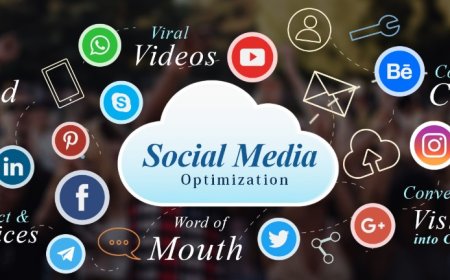Why Your B2B Website Isn’t Converting (And How to Fix It)

Youve invested time, money, and energy into building your B2B website. It looks professional, the content is solid, and traffic is steadily growing. But the leads? Theyre nowhere to be seen. Sound familiar?
If your website isnt converting visitors into customers, youre not alone. Many B2B businesses face this frustrating challenge. The good news is, most conversion problems have straightforward fixesonce you know what to look for.
In this article, well explore common reasons why B2B websites fail to convert and practical steps you can take to turn visitors into paying clients.
Understanding Conversion in the B2B World
Unlike B2C websites, where users might buy immediately, B2B sales often involve longer cycles and multiple decision-makers. That means your websites role is not just to sell instantly but to build trust, educate prospects, and guide them gently toward a decision.
Conversion can mean:
-
Filling out a contact form
-
Booking a demo or consultation
-
Downloading a resource like a whitepaper
-
Signing up for a newsletter
Identifying what conversion means for your business helps you tailor your website to support that goal effectively.
Reason 1: Your Value Proposition Isnt Clear Enough
When visitors land on your homepage or key landing pages, they need to understand immediately what you do and why it matters. If your value proposition is vague or buried under jargon, people will leave confused.
How to fix it:
-
Use simple, direct language that speaks to your audiences pain points.
-
Highlight benefits over features.
-
Place your value proposition prominentlyusually above the fold.
-
Use a compelling headline and a strong supporting subheadline.
Make it crystal clear why your solution is the right choice.
Reason 2: The Website Navigation Is Confusing
If visitors cant find what theyre looking for quickly, theyll bounce. Complex menus, unclear labels, or too many options can overwhelm users.
How to fix it:
-
Simplify your navigation with clear, logical categories.
-
Use familiar terms your audience understands.
-
Include a search bar if your site has lots of content.
-
Make your call-to-action (CTA) buttons easy to spot on every page.
Easy navigation keeps visitors engaged and moving forward.
Reason 3: Your Calls to Action Are Weak or Missing
A website without clear CTAs is like a store without a checkout counter. Visitors dont know what to do next, so they leave without taking action.
How to fix it:
-
Use action-oriented language like Get a Free Demo, Request a Quote, or Download Our Guide.
-
Make CTAs stand out visually with contrasting colors and whitespace.
-
Place CTAs strategicallyat the top, middle, and end of pages.
-
Limit the number of CTAs per page to avoid decision paralysis.
Strong CTAs guide visitors toward becoming leads.
Reason 4: Your Content Doesnt Address Your Audiences Needs
B2B buyers want to feel understood. If your website content is generic or focused only on your company, visitors wont connect.
How to fix it:
-
Create content that solves your prospects problems.
-
Use case studies, testimonials, and success stories to build credibility.
-
Offer educational resources like blogs, webinars, or ebooks.
-
Speak in your audiences language, avoiding unnecessary jargon.
Helpful content builds trust and positions you as a thought leader.
Reason 5: Your Website Loads Too Slowly
Slow websites frustrate users and kill conversions. If your pages take more than a few seconds to load, visitors often leave before seeing your offer.
How to fix it:
-
Compress images and use modern formats like WebP.
-
Minimize the use of heavy scripts and plugins.
-
Use caching and a Content Delivery Network (CDN).
-
Test your site speed with tools like Google PageSpeed Insights and follow recommendations.
Fast websites keep visitors engaged and improve search rankings.
Reason 6: Your Site Isnt Mobile-Friendly
More professionals browse on smartphones and tablets than ever before. If your site isnt responsive and easy to use on mobile devices, youre losing leads.
How to fix it:
-
Use a responsive web design that adjusts the layout based on screen size.
-
Ensure buttons are big enough to tap easily.
-
Simplify forms for mobile users.
-
Test your website on multiple devices regularly.
Mobile-friendly design is essential for modern B2B websites.
Reason 7: Lack of Trust Signals and Social Proof
In B2B, decisions often involve risk. Buyers want assurance that your company is reliable and capable.
How to fix it:
-
Add client logos, reviews, and testimonials prominently.
-
Include case studies with measurable results.
-
Showcase industry certifications and awards.
-
Use clear privacy policies and security badges on forms.
Trust signals reduce buyer anxiety and increase conversion likelihood.
Reason 8: Your Lead Capture Forms Are Too Long or Complex
Long, complicated forms scare visitors away. Asking for too much information upfront can reduce form submissions drastically.
How to fix it:
-
Only ask for essential information (name, email, company, role).
-
Use multi-step forms that feel less overwhelming.
-
Include clear explanations of why you need the info.
-
Test different form lengths and formats to find what works best.
Simpler forms encourage more prospects to reach out.
Reason 9: Youre Not Following Up Effectively
Even if visitors convert by filling a form or downloading a resource, your job isnt done. Poor or delayed follow-up kills conversion potential.
How to fix it:
-
Set up automated emails to acknowledge and nurture leads immediately.
-
Provide valuable next steps, like scheduling a call or sending helpful content.
-
Use CRM tools to track and manage leads efficiently.
-
Personalize follow-up messages to increase engagement.
Consistent, timely follow-up builds relationships that lead to sales.
Bonus Tip: Use Analytics to Understand and Improve Conversion
You cant fix what you dont measure. Using tools like Google Analytics and heatmaps helps you understand visitor behavior and spot problem areas.
-
Track metrics like bounce rate, session duration, and conversion rates.
-
Identify which pages perform poorly and why.
-
Test different headlines, CTAs, or layouts using A/B testing.
-
Use visitor recordings to see exactly where users get stuck or drop off.
Data-driven decisions improve your websites conversion over time.
Conclusion:
A B2B website that doesnt convert is like a store with no customers. But with clear messaging, intuitive navigation, strong CTAs, fast performance, and trust-building content, you can transform your site into a powerful sales tool.
Start by identifying which issues are most pressing for your website and apply the fixes step by step. Remember, conversion optimization is a continuous journey, not a one-time project.
By focusing on your visitors needs and making it easy for them to take action, your website can become a steady source of qualified leads for your business.








































